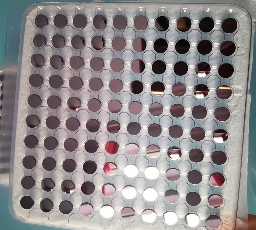ISO9001 Certified Professional Manufacturer & Supplier of Optics
+86-0431-87911611 admin@ytoptics.com
Contact us
-
 Email: admin@ytoptics.com
Email: admin@ytoptics.com
-
 Tel:86-0431-87911611
Tel:86-0431-87911611
-
 Add: 2# Automotive Innovation
Add: 2# Automotive Innovation
Jilin Province, China
How to calculate the attenuation coefficient of narrow band filters
The attenuation coefficient of a narrowband filter usually depends on the design and use of the filter. This coefficient describes how well the filter transmits or reflects light of different wavelengths. Typically, narrow band filters are designed to selectively transmit light in a particular wavelength range while blocking light at other wavelengths. Accordingly, an attenuation coefficient is used to describe the degree to which a filter attenuates light of a non-target wavelength.
The attenuation coefficient is usually expressed in negative decibels (dB). Negative attenuation coefficients indicate light attenuation, while smaller negative values indicate less light attenuation. Filters are designed with the goal of selecting the appropriate attenuation coefficient for a specific application.
Attenuation coefficients for narrowband filters can also be found in the filter's technical specification sheet, which is usually provided by the supplier. When selecting a narrowband filter, you should pay attention to the attenuation coefficient for the desired wavelength range to ensure that the filter is suitable for your application.

The attenuation coefficient is usually expressed in negative decibels (dB). Negative attenuation coefficients indicate light attenuation, while smaller negative values indicate less light attenuation. Filters are designed with the goal of selecting the appropriate attenuation coefficient for a specific application.
Attenuation coefficients for narrowband filters can also be found in the filter's technical specification sheet, which is usually provided by the supplier. When selecting a narrowband filter, you should pay attention to the attenuation coefficient for the desired wavelength range to ensure that the filter is suitable for your application.

PREV : We will attend OPTATEC 2024 on May 14 -16 in Frankfurt. NEXT : Reflective Infrared Filters

TALK TO US 86-0431-87911611
86-0431-87911611
Call us now!
 86-0431-87911611
86-0431-87911611Call us now!
ONLINE CHAT
 2433808388
2433808388

